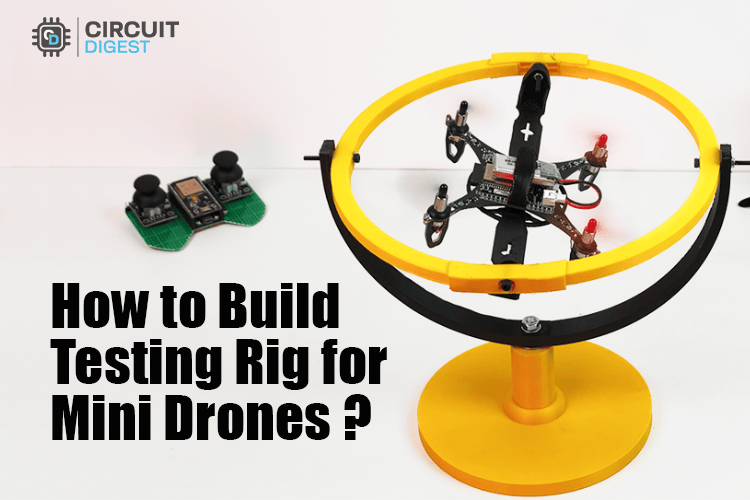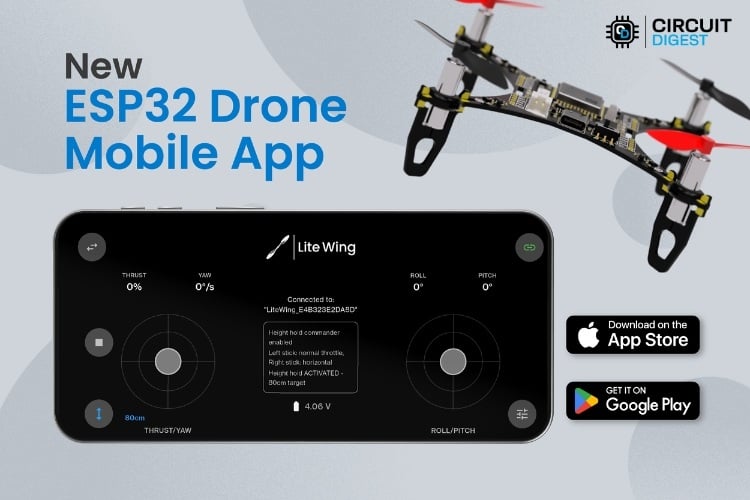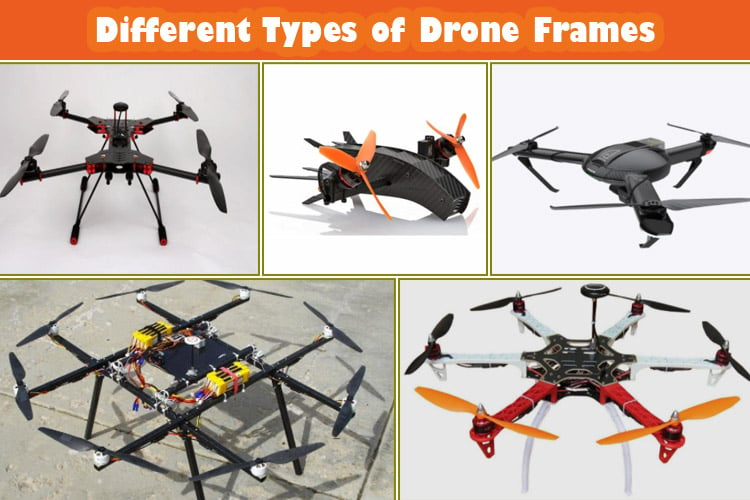
There are so many types of drones that are available in the market, and each of them serves a different purpose, so we cannot define any set criteria for their classification. As you already know, drones have a different number of propellers. The majority of commercial drones (or multi-copters) in the market today are quadcopters, which means they contain four motors. On the other hand, Quadcopters aren't the only type of drone, and not all drones have four motors. The number of motors and the design of the frame have a significant impact on the characteristics of a drone. These have an impact on stability, flight time, speed, and almost every other aspect of a drone. In this article, we are going to discuss all types of drones on the basis of the number of propellers. It is important to understand the different drone frame types to select the right multicopter for your purposes: drone frame design from single-motor monocopters to octocopters with enough motors for payload capacity and stability. In this comprehensive guide, we will look at all of the different types of drone frames available on the market today.
Table of Contents
Drone Frame Types Overview
| Drone Type | Motors | Stability | Payload Capacity | Best Use Case |
| Monocopter | 1 | Limited | Very Low | Basic vertical flight |
| Bicopter | 2 | Basic | Low | Simple applications |
| Tricopter | 3 | Good | Medium | Hobby flying, light photography |
| Quadcopter | 4 | Excellent | Medium-High | Most applications, consumer drones |
| Hexacopter | 6 | Very High | High | Professional photography, redundancy |
| Octocopter | 8 | Exceptional | Very High | Heavy payloads, professional filming |
Understanding Drone Frame Design Fundamentals
The choice of drone frame material and configuration significantly impacts flight characteristics.
Monocopters Frames
Monocopters are a type of drone which has only one motor, and using a single motor, we can move our drone in upward and downward directions only. Monocopter frames represent the simplest drone frame design with a single motor configuration. Monocopters are ruled out by this basic concept since an airflow difference cannot be created to direct the drone. The drone will lift off and fly, but yaw, rudder, and roll motions are not possible for a monocopter. Increasing the number of motors also helps to stabilise the drone. If additional motors and more wings are added, and the angle between the arms is lowered, this results in more airflow. Higher motors lift more weight capacity, which means you can carry more gear with your drone. Monocopter frames represent the simplest drone frame design with a single motor configuration.
Essential Features
» Single motor design with simplified frame structure.
» Lightweight drone frame material requirements.
» Limited to vertical flight only.
» No yaw, pitch, or roll control.
Bicopters Frames
Bicopters typically have two fixed-pitch propellers, one clockwise (CW) and the other counterclockwise (CCW). Control is achieved by varying the speed of each rotor independently, and it is possible to generate a desired total thrust. Place the center of thrust both laterally and longitudinally, and create a desired total torque, or turning force, by altering the speed of each rotor. This drone frame design achieves basic control through differential motor speeds, creating thrust variations for directional movement.

The propellers on a bi-copter rotate in the opposite direction. These propeller pairs will create lifting thrust without rotating in the same direction. Each rotor generates power and torque along its axis of rotation, as well as a drag force in the opposite direction of the vehicle's flight path. The net aerodynamic torque and the angular acceleration along the yaw axis are exactly zero if all rotors spin at the same angular velocity.
Design Advantages:
- Minimal drone frame types complexity encompasses dual motor designs.
- Counter-rotating propellers negate net torque.
- Basic directional control (through speed differential).
- Lightweight frame structure.
Tricopter Frames
Tricopters typically have three fixed-pitch propellers. These can fly in more directions than bicopters and can also carry a substantial load. Tricopters have three motors in a Y or T configuration, with the motors sitting in the distal part of the limbs. If you get your hands on a tricopter, you'll notice that it has a lot more stability than a bicopter because of the extra blade. Although even in a light breeze, a tricopter can become unsteady. Tricopters are more stable than quadcopters, but they lack the speed and performance of quadcopters. Tricopter frames feature three motors arranged in Y-shape or T-shape configurations, offering improved stability over bicopters.
Tricopters are of two types - Y shape tricopter and T shape tricopter.
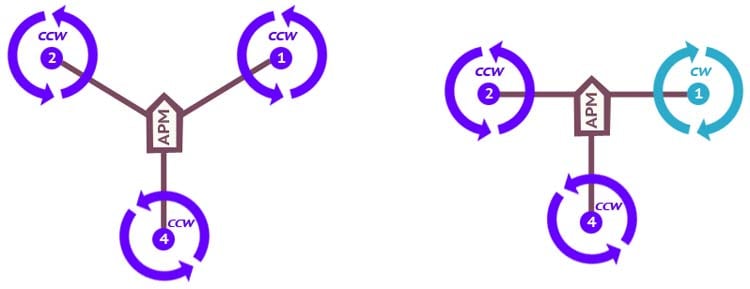
In comparison to a quadcopter, a tricopter has more yaw authority, which means that when a quadcopter or hexacopter yaws, half of the motors slow down while the other half speed up. If the copter is flying at maximum speed (all motors on), it will have to slow down to achieve yaw. On the other hand, a tricopter employs a servo to achieve yaw; therefore, it loses less thrust in the same situation. The servo-controlled yaw system in tricopter frames provides unique advantages.
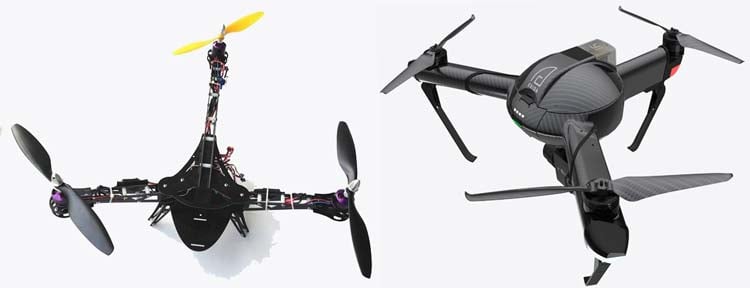
Quadcopter Frames
The quadcopter is indeed the most popular multi-copter. Everyone loves a quadcopter, whether it's a DIY maker or a professional drone manufacturer, because it's been demonstrated that four is the optimal number for balancing price, performance, stability, and flying time. A quadcopter is a multi-rotor drone with 4 motors attached. This Drone stabilises its flight using an electronic sensor and control system. There are three types of quadcopters: Plus shape quadcopter, Cross shape quadcopter, and H shape quadcopter. Quadcopter frames dominate the drone market due to their optimal balance of performance, stability, and cost-effectiveness.
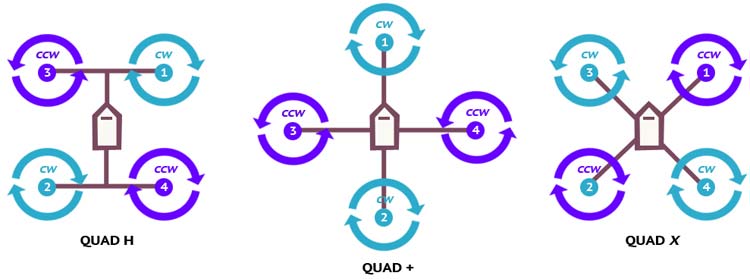
All the shapes are stable in forward flight, but a quadcopter requires a yaw control input in forward flight. Yaw control authority is identical for all configurations, but the pitch and roll control authority are about 30% greater in the case of the cross configuration. H-frame drones were the first and the most popular drones. They can handle a lot of FPV gear while running on a LiPo battery. They feature a wider base, which ensures that they roll steadily. H-frame drone batteries tend to survive longer since their location prevents them from being readily damaged. It's also the best drone frame for racing because it has lots of room for easy construction and changes. H-frame quadcopter frames gained popularity in FPV racing due to their structural advantages. These frames typically use carbon fibre drone frame material for optimal strength-to-weight ratios.
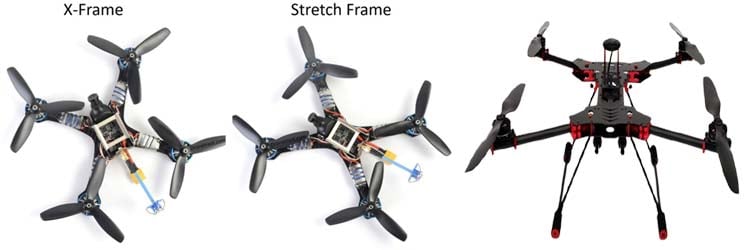
Hexacopter Frames
The hexacopter has six propellers that are placed in a circle around the hexacopter's main body. The machine's bottom has a pair of leg-like appendages that allow it to land safely on the ground. Because of its six propellers, the quadcopter is a more powerful flyer than the quadcopter and can carry bigger loads. The hexacopter has a substantial advantage that even if one of the propellers fails, the craft can still fly because of the other five propellers. This implies that if one of the propellers fails, the drone will not crash to the ground, causing damage to the equipment attached to it. The contraption will not be able to fly if two propellers fail, but it will stay stable enough to land safely. Hexacopter frames incorporate six motors arranged in circular or hexagonal patterns, providing enhanced payload capabilities and flight redundancy. Professional applications favour hexacopter frames for their redundancy features. The robust drone frame material and construction ensure reliable operation in challenging conditions.
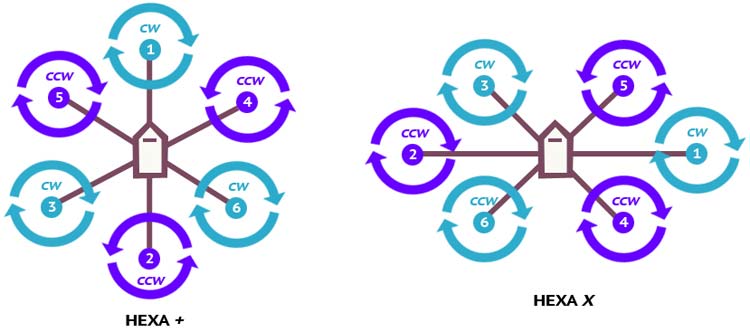
A hexacopter can go quicker and reach higher altitudes than a quadcopter. Because hexacopters are more expensive, they are typically employed to transport more valuable cargo that cannot be destroyed in the event of a crash. They are also larger and more complex to assemble and store than quadcopters.
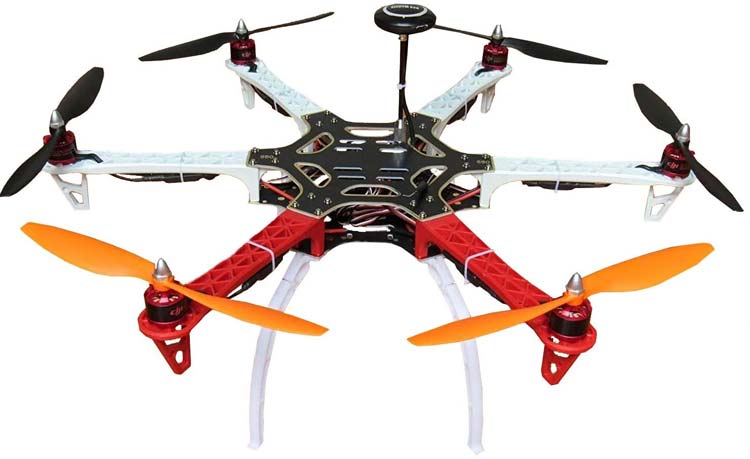
Octocopters Frames
This is the drone with eight propellers and is significantly more powerful than either a quadcopter or a hexacopter. In comparison to previous drones, these can fly higher, move faster, and carry heavier payloads. The octocopter is also extremely steady in the air, allowing it to capture footage with high-quality graphics and minimal shaking. These are considered the cream of the crop when it comes to drones because of their high performance value. They're utilised for highly specialised tasks that may require them to travel through rain or heavy gusts. The machine's robustness allows it to withstand severe weather without being thrown off course. Even if two or three propellers are destroyed, the drone will continue to fly. Octocopter frames represent the pinnacle of multirotor design with eight motors providing maximum payload capacity and flight redundancy. The robust construction of octocopter frames typically employs advanced drone frame material such as carbon fibre or aluminium alloy.
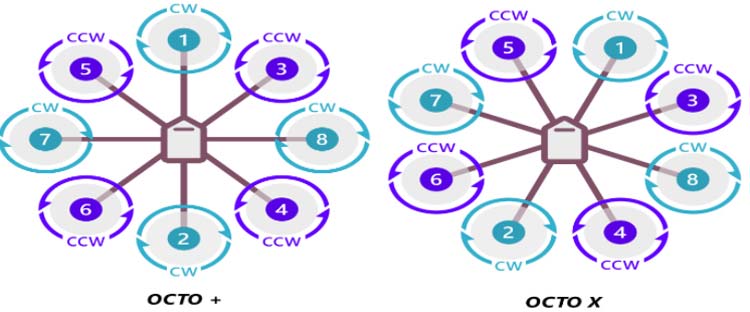
When it comes to attaching costly cameras or delicate cargo to drones, the octocopter is the greatest option because it has the best chance of keeping the payload secure and completing the job on schedule. The octocopter is frequently used in movies and television shows that require high-altitude shots. Because the equipment is so enormous, keeping it in your home might be a hassle. Additionally, caution should be exercised when carrying the drone in your car or truck to avoid damage. Because the octocopter consumes a lot of power, it can't stay in the air for very long before needing to land to recharge. If you want to use the octocopter, keep extra batteries in case the drone runs out of power before the job is finished.
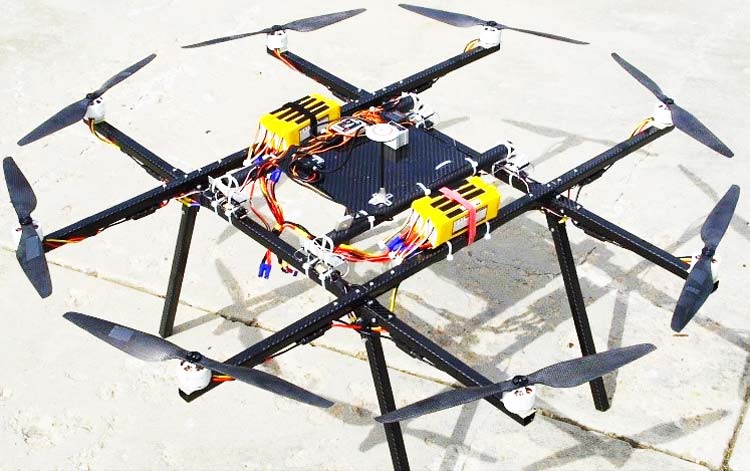
Choosing the Right Drone Frame Type
The different types of drone frames to select depend on mission needs, financial situation, and operational needs. When evaluating frame possibilities, consider the following:
» Payload Requirements: Ensure the frame capacity fits the equipment needs
» Redundancy Needs: Consider for mission-critical applications/acquisitions
» Budget Wants: Consider cost-effective vs. performance ratios
» Maintenance Difficulty: Overall considerations for long-term operation needs
Conclusion
As you can see, each of these drone types has its own set of advantages and disadvantages. Understanding different types of drone frames enables informed decisions for various applications. While the quadcopter is inexpensive and small in size, which makes it ideal for amateurs and carrying small electronics, it lacks the strength to handle greater payloads. The hexacopter is more stable and can continue to fly even if one of its motors fails. It can also fly higher and carry heavier payloads than a quadcopter. Finally, the octocopter is the most powerful of the three drones and is capable of reaching enormous heights while transporting large cargoes. However, it is the most expensive drone to purchase and requires continual charging. Now that you know the advantages and disadvantages of each type of drone, you can choose the one that best suits your requirements and provides the level of service you seek while staying within your budget.
Frequently Asked Questions on Different Types of Drone Frames
⇥ 1. Can drones continue to fly if one or more motors fail?
Hexacopters are usually able to continue flying after one motor fails, and octocopters are able to maintain failure status even if two or three motors are failing. Quadcopters usually do not continue to fly after one motor fails, except for some situations where specially designed flight controllers and procedures have been designed to enable the multicopter to land in an emergency.
⇥ 2. Which frame type offers the largest payload capacity?
Octocopter frames offer the largest payload capacity due to the eight motors distributing lift loads. They regularly carry several kilograms of payload and maintain stable flight performance, so they are most suited for commercial cinematography and industrial applications.
⇥ 3. Are tricopter frames still relevant for present-day applications?
Hexacopter and octocopter frames continue to be used where high levels of power efficiency and a distinct yaw experience are desired. The servo-driven tail can provide more yaw authority than a traditional servo yaw in common multi-rotors, but their popularity is still not as great as that of quadcopter airframes.
⇥ 4. How should I choose between hexacopters and octocopters?
If there is a moderate added payload, you should choose the hexacopter, as you are afforded some single motor redundancy with a moderate level of complexity. If it is the best payload capacity, the tolerance of failed motors, and overall stability of flight with lots of flight time, choose octocopters and accept the higher cost and complexity.
⇥ 5. What impacts the lifespan of a drone frame?
The strength of the frame is determined by the material being used, the frame joint design, the geometrical design, operating conditions and maintenance habits. Carbon fibre frames have the highest strength-to-weight ratio, while aluminium frames demonstrate adequate durability at a lower cost of use. Performing maintenance correctly and operating the drone carefully can extend the frame life substantially.
⇥ 6. What would be the best frame type for a new pilot?
Quadcopter frames are the best overall frame type for a new pilot. Quadcopter frames provide a great balance of stability, performance and price. Quadcopter frames have forgiving flight characteristics, easily obtainable parts, good online support, and a moderately complex build process - making it attractive to those who want to learn how to fly a drone, and not be overwhelmed with building one.
⇥ 7. What is usually a material used to build drone frames?
The most usual materials used to build drone frames are carbon fibre (very light, heavy-duty), aluminium (long-lasting, inexpensive), high-end plastics (good value), and fibreglass composites. For professional purposes and racing, carbon fibre is best. For hobby and learning purposes, plastic frames are best.
⇥ 8. What does the count of motors do to the performance of a drone?
More motors create more overall payload, redundancy, stability and control authority, but can project complexity, more power, cost, and weight. The ideal count of motors is based on the needs and performance of the application.
Projects using drone applications
Previously we have used this drone applications to build many interesting projects. If you want to know more about those topics, links are given below.
Let's Build a Low Cost Drone using ESP32
In this project, we are going to build a complete ESP32 drone code that can be easily controlled using our smartphones. If you are an ESP32 fan, you can also check out our other ESP32 projects, which we built earlier.
DIY Drone Test Rig: How to Build a 3D Printed Mini Drone Testing Stand
This comprehensive guide shows you how to build a 3D printed drone testing stand that allows complete flight testing in a controlled tabletop environment. This drone test stand was originally built for our LiteWing Drones, but you can use it to test any mini drones.
LiteWing-ESP32 Drone gets New Mobile App
So we at CircuitDigest have built a new mobile control drone App for LiteWing. In this article let’s understand what is new in this app and explore its features to understand how it can enhance your LiteWing experience.


